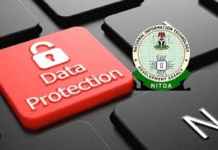Illustrative Image: Unlocking the Hidden Value of Bambara Groundnut Waste: How Valorization Drives Sustainability, Food Security, and Economic Empowerment in Africa.
Image Source & Credit: Croptrust
Ownership and Usage Policy
A recent study by Lungaho et al. (2025) titled “From Discard to Resource: Unlocking the Environmental and Nutritional Value of Bambara Groundnut Waste“, published in Frontiers in Sustainable Food Systems, reveals that effective management and valorization of Bambara groundnut waste can play a vital role in promoting environmental sustainability, food and nutrition security, and economic empowerment, especially across Africa.
“
Valorizing Bambara groundnut waste transforms agricultural residues into valuable resources, boosting sustainability, food security, and economic growth. – Lungaho et al. 2025
The study explores how the by-products of Bambara groundnut including shells, haulms (stems and leaves), and processing offals, can be transformed from agricultural waste into valuable resources that drive sustainability and economic growth. The study emphasizes that effective management and valorization of Bambara groundnut waste can play a vital role in promoting environmental sustainability, food and nutrition security, and economic empowerment, especially across Africa. By aligning with the principles of the circular economy, such innovations also contribute directly to the UN Sustainable Development Goals, particularly Zero Hunger and Climate Action. Through a detailed review of existing research, the authors identified several promising ways to repurpose Bambara groundnut waste. These include:
- Bioenergy Production: Converting waste into biogas or bioethanol to provide clean, renewable energy and reduce dependence on fossil fuels.
- Soil Amendments: Using compost and biochar derived from the waste to improve soil fertility and cut down the use of synthetic fertilizers.
- Bio-Based Materials: Developing eco-friendly products such as bioplastics and adsorbents for water purification.
- Nutrient Extraction: Utilizing the high protein, fiber, and bioactive compound content in residues to produce animal feed and functional foods.
Together, these approaches reduce environmental pollution, enhance soil regeneration, and open new income-generating opportunities for farmers. However, the study also highlights key challenges to large-scale adoption, including limited infrastructure, technical know-how, and financial capacity among smallholder farmers, as well as weak policy frameworks and cultural perceptions that often discourage waste reuse. Ultimately, the authors argue that reframing Bambara groundnut waste from an environmental burden to a valuable resource can yield wide-ranging benefits—lower greenhouse gas emissions, improved soil health, greater food security, and job creation—while fostering a more sustainable and circular agricultural system for Africa’s future.
How the Study was Conducted
This systematic review followed PRISMA guidelines, searching Google Scholar, Web of Science, PubMed, and Scopus (May-June 2025) for studies on Bambara groundnut waste valorization. The review identified integrated valorization pathways, challenges, and relevant case studies, providing a comprehensive analysis of Bambara groundnut waste potential.
What the Authors Found
The authors found that Bambara groundnut waste, including shells, haulms, and processing offals is a valuable, underutilized resource with significant environmental, nutritional, and economic potential. Instead of being treated as agricultural residue, this waste can be transformed through four key valorisation pathways—bioenergy production, soil amendment, bio-based materials, and nutrient extraction—to create renewable energy, improve soil fertility, produce sustainable materials, and enhance food and feed nutrition. Overall, the study shows that valorizing Bambara groundnut waste supports circular economy practices, reduces greenhouse gas emissions, strengthens rural livelihoods, and advances multiple UN Sustainable Development Goals (SDGs) such as Zero Hunger, Climate Action, and Responsible Consumption and Production.
Why is this important
Enhancing Food and Nutrition Security
Valorizing Bambara groundnut waste can help tackle hunger and malnutrition by creating alternative food and feed sources, reducing post-harvest losses, and improving food availability and affordability—especially in resource-limited regions of Africa.
Protecting the Environment and Climate
Transforming Bambara groundnut waste into compost, biochar, or bioenergy reduces methane emissions, prevents open burning, restores soil fertility, and supports climate-resilient agriculture—contributing to environmental sustainability and climate change mitigation.
Driving the Circular Economy
The study promotes a “waste-to-wealth” model where agricultural by-products are recycled and reused instead of discarded. This approach shifts African agriculture from a linear “produce–use–dispose” system to a regenerative, circular economy that benefits both people and the planet.
Creating Rural Economic Opportunities
Waste valorization opens new income streams for farmers through the sale of compost, animal feed, and bioenergy. It also generates rural employment and reduces farming costs, promoting economic empowerment, particularly among smallholder farmers and women.
Advancing Sustainable Innovation and Global Goals
The research provides a foundation for developing low-cost green technologies, shaping supportive policies, and fostering collaboration across sectors. It advances key UN Sustainable Development Goals (SDGs) — including No Poverty, Zero Hunger, Responsible Consumption and Production, and Climate Action — through sustainable agricultural innovation.
What the Authors Recommended
- Governments should promote waste valorization and circular economy practices through tax incentives, subsidies, and supportive regulations. Policies should prioritize bio-based products, set quality standards for compost and bioplastics, and encourage sustainable use of agricultural residues.
- Research institutions such as IITA should develop affordable, scalable technologies for bioenergy, composting, and nutrient extraction. Further studies on the nutritional composition and safe processing of Bambara groundnut waste are needed, along with efforts to transfer these technologies to rural communities.
- Collaboration among farmers, universities, NGOs, private companies, and government agencies is essential. Such partnerships can combine expertise, pool resources, and create new markets for products like organic fertilizers, animal feed, and bioplastics.
- Implement training programs and public awareness campaigns to equip farmers, processors, and extension workers with skills in composting, biochar production, bioenergy generation, and nutrient extraction. Education should also address cultural barriers to using agricultural waste.
- Expand access to microcredit, grants, and investment funds for smallholders and start-ups focused on waste valorization. Encourage the creation of community-based enterprises that process Bambara groundnut residues for profit.
- Strengthen collaboration between African nations and international organizations such as CGIAR, FAO, and AUDA-NEPAD to align policies, share research, and mobilize funding. Advocate for Bambara groundnut to be recognized as a strategic crop for Africa’s food security and sustainable development.
In conclusion, the study by Lungaho et al. (2025) highlights the transformative potential of Bambara groundnut waste as a catalyst for sustainable development across Africa. By turning agricultural by-products into valuable resources such as bioenergy, compost, bioplastics, and nutrient-rich feeds, this research underscores the power of innovation in advancing food security, environmental protection, and rural livelihoods. Embracing waste valorization not only supports the circular economy and reduces ecological footprints but also empowers farmers and communities to build a greener, more resilient future.
















 The African Research (AR) Index is a comprehensive scholarly directory and database focused explicitly on journal publishers that publish and disseminate African research.
The African Research (AR) Index is a comprehensive scholarly directory and database focused explicitly on journal publishers that publish and disseminate African research.

